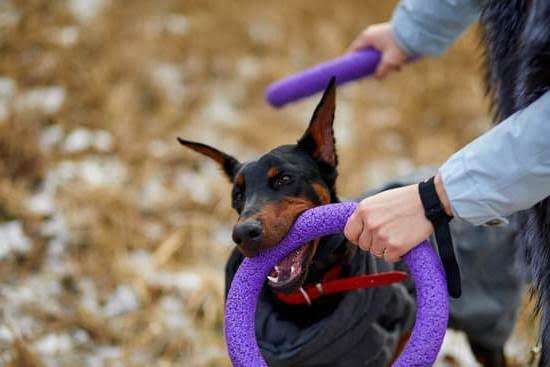Should I paper train my rescue dog? Paper training is a common method used to potty train dogs, especially rescue dogs who may have more difficulty adjusting to a new home and routine.
In this article, we will explore the concept of paper training for rescue dogs, including its benefits, drawbacks, alternatives, and how to effectively implement it. Whether you are considering paper training your rescue dog or exploring other options, it’s essential to understand the process and make an informed decision.
Paper training involves teaching a dog to eliminate on a specific surface, such as newspapers or puppy pads, instead of going outside. This method can be particularly useful for rescue dogs that may have spent time in shelters or have had negative experiences with potty training in the past. Understanding the concept of paper training and its potential impact on your rescue dog is crucial before making a decision.
In this article, we will discuss the benefits of paper training for rescue dogs, including its convenience and suitability for certain living situations. Additionally, we will explore the drawbacks of paper training and provide alternative methods that may better suit your rescue dog’s needs. Whether you ultimately decide to paper train your rescue dog or opt for another approach, this comprehensive guide will help you make an informed choice based on your dog’s individual needs and circumstances.
Benefits of Paper Training for Rescue Dogs
Paper training can be a useful tool for helping rescue dogs adapt to their new homes. One of the key benefits of paper training for rescue dogs is that it provides them with a designated space to relieve themselves indoors.
This can be especially helpful for dogs who may have spent extended periods of time in a shelter environment and are not yet accustomed to going outside for bathroom breaks. Paper training can also be a valuable option for pet owners who live in apartments or other situations where it may be difficult to take the dog outside frequently.
Additionally, paper training can help rescue dogs feel more secure and comfortable in their new environment. By providing them with a consistent and predictable area to eliminate, they may experience less anxiety and stress during the transition period. This can ultimately lead to better behavior and quicker adaptation to their new surroundings.
Another benefit of paper training for rescue dogs is the convenience it offers to pet owners. While outdoor potty breaks are important for a dog’s physical and mental well-being, there are times when it may not be feasible to take them out, such as during severe weather or when the owner is ill. Paper training provides a backup option for these situations, ensuring that the dog has an appropriate place to go when needed.
Drawbacks of Paper Training for Rescue Dogs
Paper training a rescue dog can have its drawbacks, and it’s important to consider these before deciding if this method is right for your furry friend. While paper training can be effective for some dogs, it may not be the best option for every rescue dog.
Confusion With Outdoor Potty Training
One of the main drawbacks of paper training for rescue dogs is the potential confusion it can create when trying to transition them to outdoor potty training. Some rescue dogs may have difficulty understanding that they should go outside rather than on the papers provided indoors. This can prolong the potty training process and make it more difficult to fully train them for outdoor elimination.
Odor and Cleanliness
Another drawback of paper training is the potential odor and cleanliness issues that may arise. Though the papers are meant to serve as an indoor bathroom spot for your rescue dog, they can start to smell over time and require consistent cleaning. If not properly maintained, this can lead to unpleasant odors in your home and an overall unhygienic environment.
Limited Space
For some pet owners, paper training may not be a feasible option due to limited living space. In small apartments or homes without designated areas for indoor elimination, having papers laid out throughout the living area may not be a practical or desired solution. This constraint can make it challenging to effectively implement paper training for a rescue dog.
Considering these drawbacks is essential when deciding whether paper training is suitable for your rescue dog. It’s important to weigh these factors against the benefits and other alternatives before making a decision on how best to potty train your new canine companion.
Alternatives to Paper Training for Rescue Dogs
When considering whether to paper train your rescue dog, it’s important to explore alternative methods that may better suit your dog’s needs. While paper training can be effective for some dogs, there are other options to consider that may result in successful potty training for your furry friend.
Here are some alternatives to paper training for rescue dogs:
1. Crate training: Crate training can be an effective method for potty training rescue dogs. By using a crate, you can help your dog develop bladder and bowel control by keeping them in a confined space when you’re unable to supervise them. This method can also prevent accidents indoors and encourage your dog to hold their bladder until they’re taken outside.
2. Outdoor potty training: Teaching your rescue dog to eliminate outdoors is another alternative to paper training. By establishing a consistent routine of taking your dog outside at regular intervals, you can encourage them to go potty in the appropriate place. Positive reinforcement, such as praise or treats, can also be used to reinforce this behavior.
3. Potty pads: Potty pads are a convenient option for potty training rescue dogs, especially if you live in a high-rise building or have limited outdoor access. These absorbent pads can be placed in specific areas of your home where you’d like your dog to eliminate. With consistent reinforcement and praise, your dog can learn to use the potty pads effectively.
Consider these alternatives when deciding how to potty train your rescue dog. Each method has its advantages and it’s essential to choose the one that best suits both you and your dog’s lifestyle and needs.
How to Effectively Paper Train a Rescue Dog
Paper training a rescue dog can be an effective way to help them learn appropriate bathroom behaviors, especially if they have had a history of accidents in the house. Here are some tips for effectively paper training a rescue dog:
- Establish a designated area: Choose a specific area in your home where you want your rescue dog to eliminate. This could be a corner of a room or a spot near the door for easy access.
- Use the right type of training pads: Invest in high-quality, absorbent training pads that will prevent leaks and make cleanup easier.
- Consistency is key: Take your rescue dog to the designated potty area frequently, especially after meals, playtime, and naps.
It’s important to remember that paper training is not always suitable for every rescue dog. Some dogs may struggle to understand the concept or may become too reliant on the training pads. It’s crucial to assess your individual dog’s needs and characteristics before deciding on this method.
Additionally, keep in mind that paper training should be seen as a temporary solution. The ultimate goal should be to transition your rescue dog to eliminate outside. Once they start showing signs of understanding where to go potty, gradually move the training pad closer to the door and eventually outside. With patience and consistency, most rescue dogs can successfully transition from paper training to outdoor elimination.
Factors to Consider Before Paper Training a Rescue Dog
Paper training a rescue dog can be a helpful tool in the transition from shelter life to home life, but it is not without its challenges. Before deciding to paper train your rescue dog, there are several factors that you should take into consideration.
One of the most important factors to consider is the age and background of your rescue dog. Younger dogs may adapt more easily to paper training, while older dogs who have not been trained this way before may find it confusing.
Additionally, you should assess your own schedule and lifestyle. Paper training requires a consistent routine and frequent opportunities for your dog to relieve themselves on the designated papers.
If you are unable to provide this level of consistency, paper training may not be the best option for your rescue dog. It’s also important to consider whether or not you plan to eventually transition your dog to outdoor potty training, as some dogs can struggle with this change after being paper trained.
Another factor to keep in mind is the size and breed of your rescue dog. Larger breeds may produce more waste and require larger areas for paper training, while smaller breeds may have accidents outside of the designated area. Additionally, certain breeds may be more prone to behavioral issues associated with paper training, such as marking or refusal to go outside.
Overall, before deciding whether or not to paper train your rescue dog, you should carefully assess both your dog’s needs and your own ability to maintain a consistent routine.
| Factors | Considerations |
|---|---|
| Age and background | The age and background of the rescue dog play a key role in determining their adaptability to paper training. |
| Schedule and lifestyle | You need to evaluate if you can maintain a consistent routine required for effective paper training. |
| Size and breed | The size and breed of the dog can impact how effective paper training will be. |
Addressing Common Misconceptions About Paper Training Rescue Dogs
When it comes to paper training a rescue dog, there are several common misconceptions that often lead pet owners to believe that it may not be the best option. One of the biggest misconceptions is that paper training will confuse the dog and make it difficult for them to transition to outdoor potty training. However, when done properly, paper training can actually be a helpful step in the potty training process for rescue dogs.
Another misconception is that paper training is only suitable for small breeds or puppies. In reality, paper training can be effective for dogs of all sizes and ages, especially for rescue dogs who may have spent a significant amount of time in a shelter environment without proper potty training. It provides them with an easily accessible and consistent potty spot while they adjust to their new home.
Some pet owners also believe that once a dog is paper trained, they will never learn to go outside. While it’s important to eventually transition the dog to outdoor potty training, the initial use of paper can help them develop good bathroom habits and prevent accidents indoors.
Overall, it’s important to understand that every dog is unique and may respond differently to paper training. Patience and consistency are key when implementing any potty training method for a rescue dog.
| Common Misconception | Rebuttal |
|---|---|
| Paper training confuses dogs | Properly implemented paper training can actually aid in the overall potty training process |
| Paper training only works for small breeds or puppies | Effective for dogs of all sizes and ages, especially rescue dogs |
| Dogs will never learn to go outside if paper trained |
Real-Life Success Stories of Paper Training Rescue Dogs
Case Study 1: Max’s Journey to Success
One heartwarming success story is that of Max, a rescue dog who was afraid to go outside due to previous abuse. His adoptive family decided to paper train him, and with consistency and positive reinforcement, Max learned to use the designated area for potty breaks. Over time, his confidence grew, and he eventually felt comfortable going outside.
Case Study 2: Bella’s Transformation
Bella, another rescue dog, had severe anxiety which made it difficult for her to adjust to a new environment. Her owners chose paper training as a temporary solution while working on her anxiety issues. With patience and encouragement, Bella successfully learned to use the designated area indoors. As she became more secure in her new home, she gradually transitioned to doing her business outside.
Case Study 3: Rocky’s Remarkable Progress
Rocky, a senior rescue dog with mobility issues, was provided with an indoor potty area by his compassionate caregivers. Through consistent training and support, Rocky adapted well and used the designated spot without fail. His caregivers were pleased with the results and appreciated the convenience of not having to take him outside constantly in bad weather or during nighttime.
These real-life success stories showcase that paper training can be an effective method for helping rescue dogs overcome various challenges. With love, patience, and commitment from their owners or caregivers, even dogs with special needs or behavioral issues can thrive using this method. It proves that every dog is different but with the right approach, paper training can yield positive results when done correctly.
Conclusion
In conclusion, the decision to paper train your rescue dog ultimately depends on your individual circumstances and the needs of your pet. Paper training can be a beneficial method for dogs that may not have had proper training or socialization prior to being rescued. It provides them with a safe and comfortable way to relieve themselves indoors if they are unable to go outside.
While there are benefits to paper training, such as providing a solution for dogs with anxiety or medical issues, there are also drawbacks to consider. It could potentially lead to confusion for your dog when it comes to outdoor potty habits, and it may not be suitable for every living situation.
Before making the decision to paper train your rescue dog, it’s important to carefully consider all factors including your dog’s age, size, temperament, and any existing behavioral issues. Remember that patience and consistency are key when implementing any training method. Ultimately, whether you choose to paper train your rescue dog should be based on what is best for both you and your furry companion in the long run.
Frequently Asked Questions
How Do I Stop My Rescue Dog From Peeing and Pooping in the House?
To stop your rescue dog from peeing and pooping in the house, it’s important to establish a consistent potty routine. Take them outside frequently, especially after meals or naps, and praise them for going in the right spot.
How Long Does It Take to Housebreak a Rescue Dog?
Housebreaking a rescue dog can take anywhere from a few weeks to several months, depending on their past experiences and training. Consistency, positive reinforcement, and patience are key to success in housebreaking.
Is It OK to Crate Train a Rescue Dog?
Crate training can be an effective tool for housebreaking and providing a safe space for your rescue dog. When done properly, crate training can help prevent accidents in the house and give your dog a sense of security. It’s important to introduce the crate gradually with positive associations.

Welcome to the blog! I am a professional dog trainer and have been working with dogs for many years. In this blog, I will be discussing various topics related to dog training, including tips, tricks, and advice. I hope you find this information helpful and informative. Thanks for reading!





